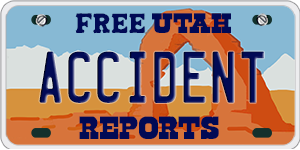What Is In My Utah Accident Report?
After you’ve been involved in a car accident in Utah, an investigating officer will fill out an official Utah Crash Report at the scene. This report contains vital information that will be used by your lawyer or the insurance company, should you decide to file a lawsuit or claim.
The official accident report can be a challenge to understand. There are a number of various abbreviations and codes that may be easy for law enforcement and lawyers to comprehend, but make very little sense to the everyday driver. That is why we have created the following guide to help you better understand your crash report from beginning to end.
Get a FREE Copy of Your Crash Report
Your Utah Accident Report Explained
Time
The first section is where the officer will report the most basic information they gather upon receiving notice of your accident, such as:
- Date and time of the accident.
- The number of vehicles involved.
- The number of injuries or deaths.
- Hit-and-run information (if applicable).
- Towing requirements (if applicable).
Location
In the next section, the officer will take down information about the precise location of your accident, including:
- County
- City
- Street name
- Latitude and longitude coordinates
- Nearby intersections
Vehicle Information
Here, the investigator will list all pertinent information for all vehicles involved in the crash:
Vehicle operators’ names, addresses, and dates of birth.
- Vehicle owners’ names and addresses.
- Driver’s license numbers.
- Vehicle’s make, model, and year.
- License plates and VIN numbers.
- The number of occupants in both vehicles.
Here, investigators will also take down the insurance provider, and policy information for all vehicles involved in the collision.
Work Zone Details
The report will indicate whether the accident took place in a construction zone, how many workers were present if so, the number of vehicles involved, the number of lanes on the roadway, and property damage other than vehicles.
Witnesses
The crash report will also contain contact details for any witnesses to the accident, including names, addresses, and phone numbers.
Vehicle Impact Points
In this section, the officer will list, via a numeric code, the precise point of impact for each vehicle involved in the crash. They may also take down the speed limit in the area, and the rate of speed each vehicle was traveling when the accident took place.
Persons Involved
This section includes information about all occupants in each vehicle. The officer will list their identification details, as well as their location in the vehicle, the severity of any injuries, and whether or not they were restrained when the crash occurred.
Diagram And Narrative
The final section of the report is where the responding officer documents a detailed account of what took place. They will draw, to the best of their abilities, a diagram of the scene. The diagram will include the location of each vehicle, including the officer’s as well as any notable road markings and landmarks.
Through the narrative, the officer will be able to take down exactly how they believe the incident transpired. Here, they will give a detailed description of the accident prior to and immediately after the impact. The officer can also provide an account of who they believe was at fault in the accident and actions that individual took to cause the crash.
